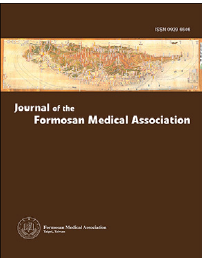Hsin-Ju Chiang, Kuo-Chung Lan, Yao-Hsu Yang, John Y. Chiang, Fu-Tsai Kung, Fu-Jen Huang, Yu-Ju Lin, Yu-Ting Su, Pei-Hsun Sung
Background/Purpose
Endometriosis (EM) is linked to cardiovascular disease (CVD). However, whether this finding can be applied to the Taiwanese population remained unanswered. To investigate the association between EM and major adverse cardiovascular and cerebrovascular events (MACCE) and the therapeutic effect on the risk of MACCE in Asian women with EM. A retrospective population-based cohort study was performed.
Methods
A total of 17 543 patients with EM aged between 18 and 50 years were identified from a general population of 1 million Taiwanese after excluding diagnoses of major CVD and cerebrovascular accident (CVA) prior to EM. The comparison group (n = 70 172) without EM was selected by matching the study cohort with age, sex, and income and urbanization levels in a 4:1 ratio.
Results
During a median follow-up period of 9.2 years, Taiwanese women with EM had a significantly higher frequency of comorbidities, medical and surgical treatment, and MACCE than did their non-EM counterparts (2.76% vs 2.18%, P < .0001). After adjustment for comorbidities, patients with EM had an approximately 1.2-fold increased risk of MACCE (95% CI 1.05–1.29; P = .0053) and a higher cumulative incidence of MACCE compared with the normal population. Neither medical nor surgical treatment increased the risk of MACCE. Furthermore, medical treatment for EM appeared to be protective against MACCE.
Conclusion
Taiwanese women with EM not only had a substantially higher frequency of comorbidities but also an increased risk of MACCE compared with the general population.
Keywords
Endometriosis, Major adverse cardiovascular and cerebrovascular events, Population-based cohort study, Medical and surgical treatment
Journal of the Formosan Medical Association, Volume 120, Issue 1, Part 2, 2021, Pages 327-336, ISSN 0929-6646,
https://doi.org/10.1016/j.jfma.2020.10.005.




